Do You Already Know This Concept?

If so Check THIS out..

Within this category, essays and articles focus on effectively teaching children in the pre-school and elementary grades. It’s a great place to find teaching tips and get advice from experienced practitioners.
Do You Already Know This Concept?

If so Check THIS out..

(Publisher’s Note: This article is based on a presentation made by the author as part of the 50 Million Strong by 2029 Forum held at the 2017 SHAPE America National Convention.)
In 2015, SHAPE America unveiled something new entitled 50 Million Strong by 2029 (50MS) at its Seattle National Convention. Immediately, people asked, “What exactly is this 50MS?” I’ve heard it described differently: A program, a curriculum, an initiative. Some disparagingly described it as just another one of SHAPE America’s gimmicks, or the dumbing down of physical education to just getting kids active. In fact, 50MS is defined as a commitment to ensuring that by the year 2029 all children who started school in 2015 will, by the time they graduate from high school in 2029, have the skills, knowledge and disposition to lead healthy and physically active lives. Admittedly, following its unveiling, SHAPE America perhaps fell short in how 50MS was presented, described, and operationalized. However, at its core 50MS is a tangible goal, or target for the profession to shoot for over the next 12 years. And whether or not 50MS succeeds depends on what the field as a whole (i.e. teachers, teacher education programs, and our state, district and national association), opts to do to achieve that goal.
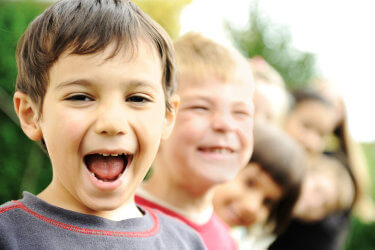
Fundamentally, 50MS has its roots in two key trends. First, there is the well-documented rise in overweight and obesity levels among children and youth (among others) that gave rise to health-oriented physical education (e.g., Metzler, McKenzie, van der Mars, Williams, & Ellis, 2013a, 2013b; Sallis & McKenzie, 1991; Sallis, McKenzie, Beets, Beighle, Erwin, & Lee, 2012). The Comprehensive School Physical Activity Program (CSPAP) model was introduced principally in response to the concerns surrounding overweight and obesity (NASPE, 2008). But to be clear, the CSPAP framework emphasizes quality physical education as its centerpiece component!
(Publisher’s Note: This article is based on a presentation made by the author as part of the 50 Million Strong by 2029 Forum held at the 2017 SHAPE America National Convention.)
The physical education profession has faced numerous challenges in recent decades. A few of these challenges include declining contact days and hours in K-12 health and physical education, declining membership within the national and state organizations, and a declining professional reputation due to inappropriate teaching. Given the current state of our profession, what needs to occur in order to repair and improve our professional reputation?
The announcement of 50 Million Strong by 2029 at the 2015 National PETE & HETE Conference appeared to place a wedge in our professional organization. This initial rollout was heavily centered around physical activity with little to no reference to physical education. Significantly however, recent discussion about 50 Million Strong has focused on physical education assuming a more prominent role. Let’s be honest, physical education must be the main focus of 50 Million Strong. Are we to believe 50 Million Strong has a flexible definition? Will 50 Million Strong morph as new SHAPE America Presidents assume their elected posts? A unified and consistent vision is essential if this new professional commitment is to succeed.
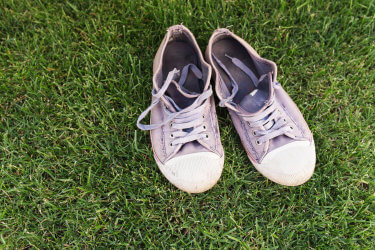
FROM THE FOUNDER: First of all, I would like to thank the thousands of K-12 physical education teachers who have attended the institute in the past. Our upcoming gathering is expected to be the “Place To Be” for 500+ physical education leaders and experts from over 37 different states and 11 different countries. I also want to mention that we have decided to “close our doors” after 2020. In other words, this year (2019) and next year (2020) will be the last two events our company will host. It has been the pleasure of our family to serve each of you during this time. Thanks for your support!
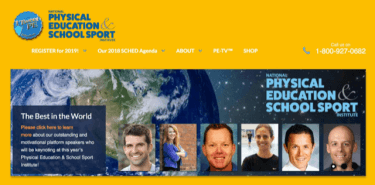
THIS YEAR’S EVENT: The 2019 National Physical Education & School Sport Institute will take place on Monday July 22 through Wednesday July 24, 2019 in Asheville, North Carolina. This is the 8th annual gathering dedicated to providing the ultimate learning and networking opportunity for #PEGeeks across the United States and around the world.
I’m always looking for fun ways to motivate my students to develop their athleticism. I’m constantly searching for creative ways to have the students work on setting goals and mapping out plans to achieve them. I want to teach my students how to overcome obstacles and not give up. And I’ve discovered I can literally do just that with a physical education inspired version of TV’s American Ninja Warrior course!
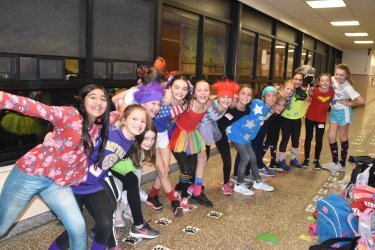
TV shows such as Wipe-Out, American Ninja Warrior, Ninja Warrior Junior & Titanare wildly popular among our youth right now. The high intensity, high-risk style of competition is the reason for their popularity. These shows always have my children and I on the edge of our seats, hearts racing, muscles tensing, almost willing the athletes to get through to the next obstacle. These shows are inspiring children, teens, and adults to become more physically active and try new things outside their comfort zones. With this in mind, I decided a school-wide competition would be a great teaching tool to motivate my students to rise up, challenge themselves, and learn what they are capable of.
Every year, the students in my school look forward to our Giant Obstacle Course. Year after year, we set up in class different obstacles that are both fun and crazy while challenging the students’ strength, endurance, and overall fitness. So, this year, my co-worker and I designed the course to resemble the show American Ninja Warrior. We made our version of the quad steps, rope swings, rolling log, warped wall, Tarzan ropes, cargo climb, jumping bars, salmon ladder, unstable bridge, devil steps, rope junction, cliff hanger, monkey pegs, etc. I have to brag for one moment! The course was AWESOME! Everyday you would find my coworker and I playing on the course any free minute we had. Even some of the teachers and staff would come in during their class PE period and play.
Student lives are packed with school, homework, entertainment, social media and much more. This leaves little time for healthy eating and exercising. Understanding how to fit healthy meals and exercise into busy school days affects the ability of our students to meet the high demands of a busy life while simultaneously maintaining short and long-term health. Physical activity, good nutrition, and a healthy mind set, build the foundation for a well-rounded childhood. Questions about whether or not to eat breakfast, what to eat for breakfast, when to exercise, and how many hours of sleep are needed, are often confusing topics with many differing opinions. In this article, we address some common topics relating to how to start the day based on research-proven strategies for dealing with the fast-paced environment in which today’s students live.
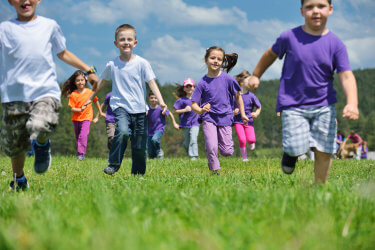
Habits
Habits are regular tendencies and practices followed with little conscious effort. Habits are born out of long-term consistent routines. The more consistent students are with sleeping, eating right, and exercising, the greater likelihood they will become habits. Although changing our daily lifestyles can be difficult, one effective strategy is to set the goal of practicing 3-4 new behaviors for 30 days. These new goals should be written down and read daily. After 30 days students often discover that the new behaviors are taking less effort and starting to become second nature “habits.” But remember, it’s important to ensure routines (e.g. to eat breakfast everyday) are also consistently healthy (i.e. include meals that are well-balanced). Because lifelong habits can good or bad for your well-being, it’s vital our students’ choices are good!
Have Plenty of Choices
School-age children often don’t like doing the same thing over and over again. Routines that don’t include variety can become boring. But including variety doesn’t have to take away from the goal of developing consistent habits, but rather emphasizes the importance of providing choices within behaviors. Students need to have plenty of healthy choices for food and different options for staying physically active. Mixing it up is fun, refreshing, and something to look forward to doing rather than disliking.
Elementary school teachers are commonly referred to as “generalist” teachers because they normally teach across all the curricular areas. For generalist teachers, the connection of curricula can be effective in helping students experience meaningful learning; it helps students “connect the dots.” Often overlooked however is that elementary school physical education specialists can help support generalists in “connecting the dots” between physical education and other curricular areas to enhance student learning.
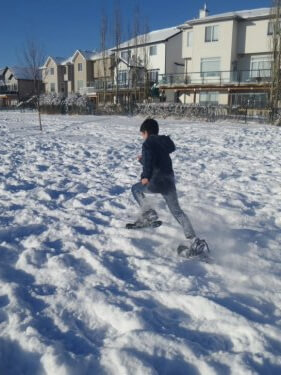
Significantly, students who are exposed to connected or integrated curricular areas demonstrate academic performance equal to or better than students who are exposed to discipline-based programs (Drake & Reid, 2010). And, implementing integrative activities across different subject areas has been recognized as being effective for fostering learning, while maintaining high levels of student motivation, creativity, and discovery (Bradford & Schmidt, 2016). Benefits from cross-curricular connections also include: building on prior knowledge; unifying student learning; reflecting real world situations; and matching the way students think (Alberta Education, 2007).
Purposefully connecting competencies from within or across subject areas develops the understanding of key curricular learning outcomes. However, according to Gleddie, Hickson, and Bradford (2018), although cross-curricular learning refers to connecting subject areas, teachers must recognize the importance of meeting the unique intended learning outcomes in each curricular area. It is not a ‘true’ cross-curricular connection when one subject area receives a great deal of focus, while the other subject area receives minimal. For example, just because a teacher takes a Grade 4 class outside to search for and collect various items related to a science project, the lesson is not a ‘true’ cross-curricular connection to physical education (Gleddie, et al., 2018). When students are simply asked to travel to various spots to collect items such as pine-cones, rocks, and leaves, although physical activity is involved during this lesson, no learning outcomes related to physical education are explicitly met.